I really liked Skyfall. I think it’s the best “Bondy” Bond movie in quite a while. It has a fantastic cast, beautiful cinematography, a solid script and a very human heart. However, it also owes a very conscious debt to director Christopher Nolan. In particular, it seems to have learned a great deal from the director’s recently completed Batman trilogy. There are certainly worse role models for a big blockbuster to have, and Mendes has been quick to acknowledge the influence that Nolan’s films had on his work here. That strange synthesis works surprisingly well, perhaps a testament to just how much the two franchises have in common.
It’s hard to entirely shake the feeling that Skyfall was patterned after The Dark Knight. Nolan’s blockbuster has had a massive (and deserved) influence on the blockbusters that Hollywood has produced over the last few years. To be fair, the influence isn’t always benign. After all, not every character or franchise lends themselves to the somewhat darker tone that defines Nolan’s take on Batman – with the recent Green Lantern and The Amazing Spider-Man suffering a bit from sticking too close to the darker realism of Nolan’s record-smashing hit. However, I’d suggest they were taking the wrong lesson from Nolan’s film.
After all, darker is not inherently better. JJ Abrams’ Star Trek reboot should have demonstrated that. However, Mendes and his team seem to have learned the right lessons from The Dark Knight. The “right” lessons to learn from that massive blockbuster aren’t about tone or plotting, but about how you approach the iconic character at the centre of the story. With The Dark Knight, Nolan examined seventy years of history for the Caped Crusader, and produced a movie that found a way to be loyal to all that while still remaining firmly anchored in the modern day.
The Dark Knight is, if you ask me, one of the best Batman stories ever told, because it examines the root of the character, while still remaining firmly relevant. Questions about Bruce’s obsession or his authority or his legitimacy can be traced back to the earliest Batman issues, where the character was hunted by the police as a reckless vigilante. However, Nolan decided to ask those questions in the context of a global War on Terror, making the questions about Batman in some way about or society as a whole. Can we protect the virtues we seek to uphold by allowed authorities to violate them? How does a culture balance the demands of liberty and security?
More than that, though, Nolan’s films were never ashamed of Batman as a character. Much has been made of Nolan’s “realism”, but I always found the word slightly awkward. Batman has all manner of impossible or improbable gadgets and technology, it’s just that Nolan presents them as fitting with the world at large. I think Nolan’s approach could be best described as “verisimilitude.” Nolan’s Batman has all the gimmicks and gadgets. Some are introduced in lectures by Lucius Fox, while some just are.
This Batman has a Batmobile. He has a Batbike. He has a Batplane. He has all the tropes that one associates with Batman, only Nolan doesn’t feel the need to mock them as he executes them – like Joel Schumacher did. Instead, he explains quite a few of them, and he treats the rest as logical extensions of the character. This is what Batman is, he seems to say, without making apologies. Skyfall does something similar with Bond, returning a lot of the classic tropes that Casino Royale and Quantum of Solace strayed away from.
Just as Nolan is happy to let Batman be Batman, without apologising for it, Mendes is happy to let Bond be Bond. The opening action sequence feels like something that could have escaped from the Roger Moore era, but executed with more skill and technique than most of those set pieces. (Although I did pick up one nice green screen shot, which I interpreted as a sly homage to the Moore era.) Mendes doesn’t fill the sequence with knowing winks and nods, nor does he try to rationalise it too much. Instead, he just goes for it. So we get that great shot of Bond attacking a train with a digger, and straightening his cufflinks as he lands, the sort of stylish tic that defines the character.
Like Nolan’s Batman, Mendes redefines the character in the context of the modern world. M spends most of the movie trying to justify Bond’s existence in a world of cyber-terrorism and sub-committees. One particular bureaucrat suggests that M is harking back to a “golden age of espionage” by keeping Bond around well past his sell-by date. However, M makes a clever and impassioned argument in support of her agent, and one very much anchored in modern realities. Like Nolan’s take on Bruce Wayne, Mendes’ Bond isn’t less relevant because the world has changed. He is more important than ever.
The structure of Skyfall is occasionally a bit too close to that of The Dark Knight. This is especially true in the second act, when Silva is captured by our heroes and interrogated, only for our heroes to realise too late that it was a set-up. The point at which a conventional blockbuster would end is only the start of something grander. Like the Joker, Silva escapes captivity in a most dramatic fashion, relying on the nature of his captors to provide him with a key. The Joker took urban terrorism to extremes in Gotham, using familiar tools like videos of murder and torture of innocents. Silva launches an attack on London, using its public transport as a weapon against Bond. The similarities to the July 7th bombings can’t really be overlooked.
If Heath Ledger’s Joker allowed Nolan to rework the iconic Batman villain as a more modern terrorist, then Mendes uses Silva to do something similar with the Bond villain archetype. Bond chases Silva through London, but he’s defeated by the fact the villain can blend into the crowd. Bond can’t keep up with him because he can’t see him in the sea of faces. It’s that anonymity that makes Silva dangerous – the villain doesn’t appear until seventy minutes into the film, but his presence is felt from the opening scene, and throughout the movie. He is anonymous, he is brutal, and he is indifferent to human suffering in the service of his ideals. Of course, his grand philosophical posturing is revealed to be nothing more than personal pettiness.
Much as Nolan used the political climate of 2008 to explore the relevance of the Batman myth, and to ask a few questions about our own “watchful guardians”, Mendes uses Silva’s similarity to modern terrorists as a justification for Bond’s continued existence. Bond is a character who can be brutal and violent, while still retaining his civilised nature. Connery’s Bond was a murderer and an assassin, but he was also capable of being a gentleman – of holding on to what made him human in the midst of impossible brutality. Skyfall seems to make the case that those attributes don’t date Bond. Perhaps they make him more relevant than ever.
I suspect that Nolan would be proud of the influence he has had on the latest Bond film. After all, the director is an avowed fan of the franchise, and has conceded he might like to work on it one day. One can see a very clear influence of Bond in his work. Ra’s Al Ghul’s secret mountain headquarters in Batman Begins seems eerily similar to Piz Gloria from On Her Majesty’s Secret Service. That same Bond film inspired the final level of dreaming in Inception. The opening to The Dark Knight Rises owes a significant debt to Licence to Kill. The Joker appears to have borrowed Rosa Klebb’s boot from From Russia With Love.
More than that, though, his passion for practical special effects seems inspired by the Bond series, renowned for executing almost impossible stunts. Nolan’s linear movies share a structural component with the Bond films. The Dark Knight and The Dark Knight Rises effectively have “Bond movie opening scenes”, but focused around the two villains rather than an unrelated adventure of the hero. Inception uses the formula to show us what a regular “dream heist” looks like, before getting into the story proper.
His villains seem rather consciously molded on Bond archetypes, with their gigantic schemes and wheels within wheels. To be fair, Nolan’s villains have a psychological complexity lacking in all but the best Bond villains, but you can certainly sense the influence of Bond on the characterisation and construction of Nolan’s Batman babies. In The Dark Knight Rises, for example, Miranda Tate seems remarkably similar to Hugo Drax from Ian Fleming’s Moonraker.
She seeks to avenge a past wrong by infiltrating high society and positioning herself to avenge her loss against the world using a tool she promised would help her adopted home’s standing. Like the Moonraker rocket in the novel, Tate’s reactor is supposed to make Gotham more secure and independent, but she plans to use it to destroy the city. Her scars might be less obvious than Drax (on her back rather than her face), but the other similarities are quite noteworthy.
In fact, her speech to Bruce about “the slow knife” waiting patiently for vengeance could easily have come from Fleming’s Moonraker novel, as Drax brags to Bond about his sinister plan for mass-murder, finally put into action long after the war has ended. Drax assembled a bunch of former Nazis to assist him in his objective, and Tate assembles the remnants of her father’s international cadre of assassins to help her exact revenge on her father’s murderers.
Similarly, her relationship with Bane recalls the dynamic between Elektra King and Renard, right down to confusion about who the true villain of the film is. (I’d argue Bane is far more proactive and in-tune with his companion than Renard ever was – Renard seemed a bit zoned out talking about the death of the West while his girlfriend just wanted to make some money. Well, that and revenge.) In both cases, the true villain seduces our hero only to exploit his weakness later on. It’s hard not see that as an affectionate homage on the part of Nolan.
Even his decision to use Ra’s Al Ghul as the first villain in his Batman trilogy seems influenced by Bond. Created in 1971 by Denny O’Neil and Neal Adams, Al Ghul is unique among Batman villains for several reasons. The one most relevant to the matter at hand is that he represents a father-figure to Bruce. Bond expert Kingsley Amis suggested that the best Bond villains were stern father-figures who provided a challenge to the young and rebellious Bond.
Indeed, those early issues feature Ra’s Al Ghul seem to position Batman in a role quite similar to Bond. Somewhat uncharacteristic of the comic, Batman becomes a globe-trotting adventurer to face his adversary, the head of a nebulous evil organisation bent on the destruction of humanity. One of their early encounters seem consciously influenced by On Her Majesty’s Secret Service, with Batman chasing Ra’s Al Ghul through the Alps.
That said, there’s always been a sense of similarity between Bond and Batman. After all, Tim Burton’s Batman introduced us to Bruce Wayne in a tuxedo. Bruce Wayne was named for Scottish patriot Robert Bruce, betraying a sense of old world charm about him. Indeed, Bob Kane’s early Batman stories were all centred around a world of class and means, with Bruce Wayne allowed to accompany Commissioner Gordon on official police business by virtue of his social standing.
I’ve always felt that there was considerable overlap between the two icons. After all, both are orphans who fight crime and terror using an arsenal of gimmicks and gadgets. Even before Nolan reimagined Lucius Fox as Q to Bruce’s Batman, Batman had a wealth of gadgets that would make Q branch jealous. Batman is one of the few major heroes who never had a truly steady love interest, reflecting Bond’s status as a perpetual bachelor. Both characters faces mortal adversaries whose inner demons are frequently expressed in external deformities or scarring. It’s not too difficult to image Jaws as a Batman villain or the Riddler as Bond baddie.
Skyfall does push the similarities to Nolan’s Bruce Wayne a little too much. Fleming confirmed that Bond was an orphan, but Skyfall has Bond return home to the family estate, an old mansion which he holds in contempt. His sentiment seems quite similar to the contempt that Bruce originally held for his family home, even if he never says anything as direct as, “This place is a mausoleum. If I have my way, I’ll pull the damn thing down brick by brick.”
Visiting the estate, we meet the old game-keeper, Kincaid. Kincaid is an elderly British gentleman played by a distinguished British character actor with a wry sense of humour but a healthy respect for his young charge – a sense of loyalty, it seems, inherited from the boy’s parents. At times, Kincaid does seem a little bit too much like Alfred to Bond’s Bruce.
However, the most awkward comparison comes when we discovers tunnels under the old Bond manor. In particular, Kincaid describes how Bond reacted to the news of his parents’ death by going down into the tunnels. When he came back, we’re told, he was no longer a boy. It seems a bit strange that Bond would also have a transformative experience in the caves beneath his family’s estate. To be fair, it’s an effective storytelling tool, and I can see why the script used it, but it did feel a little too similar.
Of course, Batman has been heavily influenced by Bond before, so turnaround is fair play. Indeed, Scottish writer Grant Morrison seemed to reimagine Bruce Wayne as some sort of hyper-Bond archetype for portions of his extended run on Batman. In particular, elements of his run seem to make nods towards that most polar of the Brosnan films, The World Is Not Enough. His Batman R.I.P. sees Bruce Wayne seeming to fall in love with “Jezebel Jet”, a woman who sounds like a Bond girl – and who has loftier ambitions than becoming “a Wayne girl.”
Like Elektra King, Jet seems to steal our hero’s heart. She is also the victim of some terrible abuse as a child, and has grown up into a psychologically-damaged villain as a result. Bruce finds himself having to compete with her over-protective security guards for her attention. When one says something, Jezebel translates, “He says you’re cool, like James Bond.” Bruce replies, “Oh, I’m much cooler than he is.”
The pair get a nice bit of romantic bonding on the ski slopes, where Bruce takes down a bunch of flying snowmobiles, in what seems like a direct homage to one of the more iconic action sequences in The World Is Not Enough. Morrison’s current Batman project, Batman Incorporated, has a very clear James Bond influence, as Batman evolves into this globe-trotting hero, rather than one isolated within Gotham. Portraying Bruce as an American James Bond seems quite astute.
Perhaps, however, the greatest similarity between the two icons is their ability to evolve and adapt to the world at large. Bond has changed dramatically and repeatedly in the years since Dr. No. Sean Connery’s take on the character was distinct from Moore’s, which was distinct from Dalton’s. The character can be played as incredibly campy or incredibly series, and no take is any more or less valid than any other.
The same is true of Batman as a character. Whether it’s the campy Adam West era, the gothic work of Tim Burton or the modern approach of Christopher Nolan, Batman is also a character who can evolve and change with the times. Indeed I’d argue that it’s his major strength – much like that attribute is for James Bond as well. Perhaps we should be glad Adam West declined to play James Bond. They already have enough in common.
Filed under: Movies | Tagged: batman, Bondy, Christopher Nolan, ChristopherNolan, dark knight, Dark Knight Rises, green lantern, James Bond in film, joker, Mendes, nolan, Skyfall |
















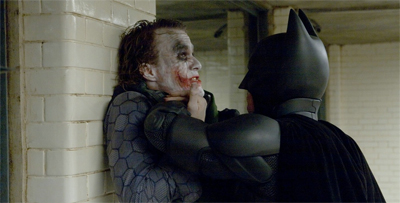

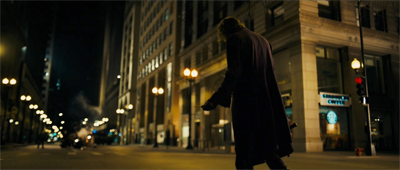
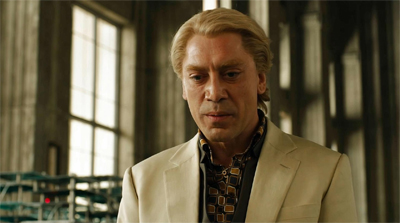
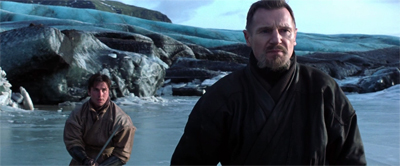



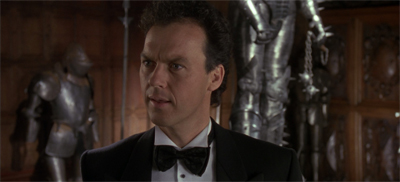
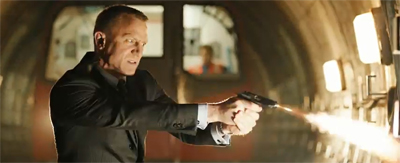
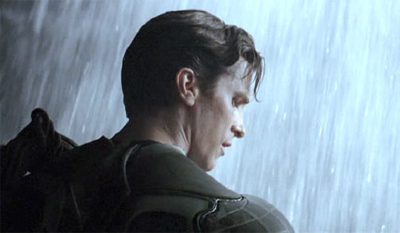

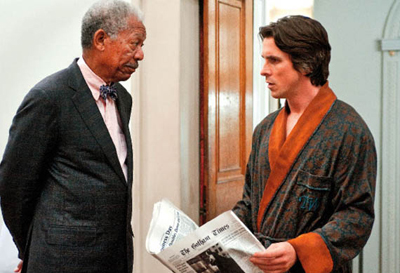





Brilliant post! So pleased you highlighted the comparisons, I couldn’t help but think that Skyfall had “The Dark Knight” feel to it, which was a very good thing indeed!
Thanks Caz. It was. I think that The Dark Knight is an excellent guide to how to handle a character like Batman or Bond – not necessarily in tone or theme, but in philosophy.
Excellent artcile, I too thought there were similarities whilst watching the film on Saturday. Always enjoy your reviews, and no doubt will continue to. Not to be a know-it-all but just in case you wanted to correct…a few grammatical/spelling errors, in particular the last paragraph about “the gothic work of Tim Burton or the modern approach of Tim Burton” which I assume you meant to say Christopher Nolan
Of course, my bad, correcting now! Cheers!
No problem, keep up the excellent reviews!